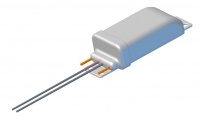Your Custom Text Here

GPS-UHF
GPS-UHF Sensors (short range)
- Collect movement and location data as frequently as once per minute.
- Log up to 10,000 locations onboard (Ecotone Telemetry).
- e-obs records up to 1 million points.
- Send data to handheld or fixed receiver.
- Units can be re-tasked after deployment by researchers.
- Download from distances as great as 4-6 km.
The e-obs and Ecotone Telemetry GSM-UHF units enable high-resolution data collection with extremely lightweight sensors. When the units are within range of a handheld or fixed receiver, data are downloaded and stored on your computer. Solar configurations allow tracking for multiple years and battery units can be used for nocturnal species and birds with dense plumage. These units work particularly well for species that return to a single location, such as a nest or colony site.
e-obs takes the technology to the next level, with the ability to program activity-based and movement-based sampling regimes. For example, units can be set to sense when birds are flying and collect one point per second, but then reduce sampling during incubation. Similarly, units can be tuned to detect when burrowing mammals are inactive and stop sampling, and then to increase sampling during higher-activity behaviors. e-obs units are designed to provide investigators the ability to target specific and important research questions - exemplified by the list of top-tier journals featuring studies that used e-obs materials.










